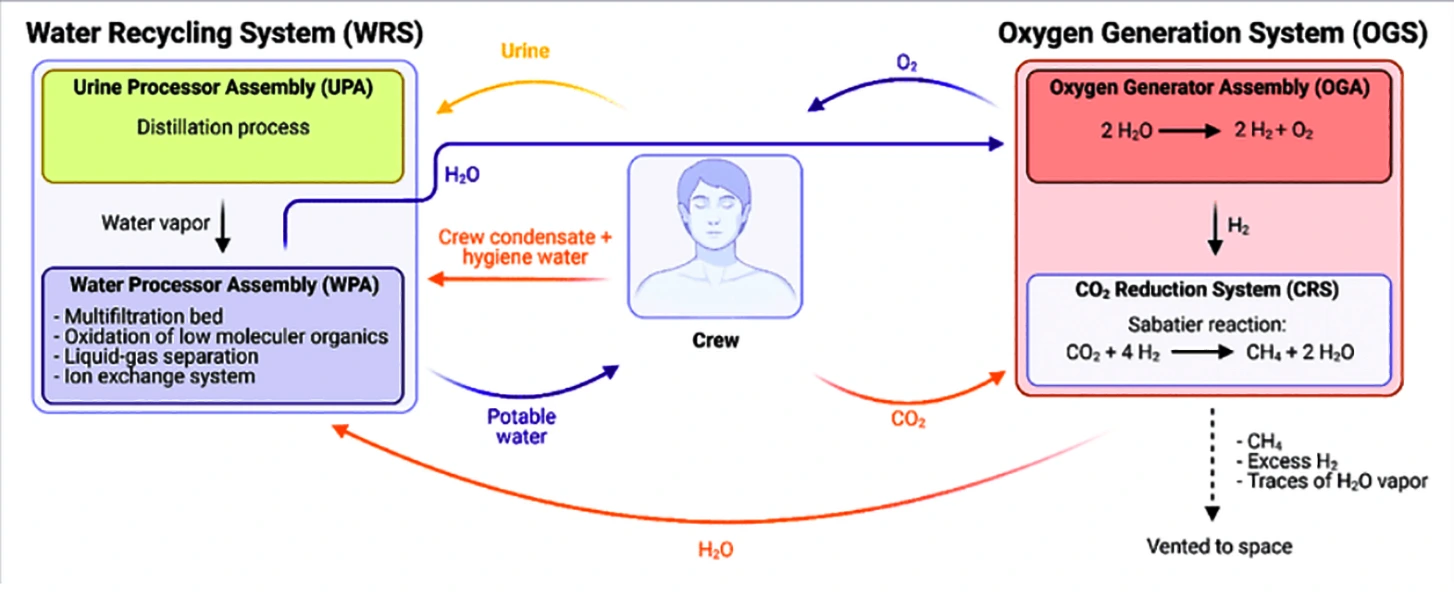Context: ISRO has decided to indigenously develop the environmental control and life support system (ECLSS) for the upcoming human space flight Mission Gaganyaan.
ISRO to develop Environmental Control and Life Support System for Gaganyaan mission
- According to the chairman, ISRO has no prior experience in developing an environmental control life support system till now.
- Their focus has largely been on designing rockets and satellites.
- Dependency on Counterparts: ISRO depended on other nations for this knowledge.
- However, despite extensive efforts, it could not be procured due to the unwillingness of other nations.
Gaganyaan Mission
- Aim: The Gaganyaan mission envisages a demonstration of human spaceflight capability by launching a crew of 3 members to an orbit of 400 km for a 3 days mission and bring them back safely to earth, by landing in Indian sea waters.
- Launch Vehicle: The LVM3 rocket, India’s heaviest rocket, will be used to launch the spacecraft.
- International Collaborations: ISRO has collaborated with international agencies like Russia’s Roscosmos for astronaut training, and likely with others for aspects like life support systems.
- Indigenous Development: The mission emphasizes the development of home-grown technology, boosting the domestic aerospace industry.
|
About Environmental Control and Life Support System (ECLSS)
- ECLSS is a critical subsystem in spacecraft and space stations, designed to sustain human life in the harsh environment of space.
- Key Aspects of ECLSS:
 Air Management: The Environmental Control and Life Support System (ECLSS) is responsible for maintaining air quality by removing carbon dioxide, controlling oxygen levels, and filters out contaminants and particulate matter.
Air Management: The Environmental Control and Life Support System (ECLSS) is responsible for maintaining air quality by removing carbon dioxide, controlling oxygen levels, and filters out contaminants and particulate matter.- Water Recovery and Management: The ECLSS recycles water from various sources, including urine, sweat, and condensation to make it safe for drinking and other uses.
- Oxygen Generation System: It produces oxygen for the crew to breathe. The system consists of the oxygen generation assembly and the carbon dioxide reduction assembly.
- The oxygen is delivered to the cabin atmosphere while the hydrogen is either vented into space or fed to the carbon dioxide reduction assembly.
Significance of ECLSS
- ECLSS is not just crucial for space exploration but also contributes to the development of sustainable technologies on Earth, as its principles are applicable in areas like water purification and air filtration.
News Source: Economic Times
![]() 16 Dec 2023
16 Dec 2023
 Air Management: The Environmental Control and Life Support System (ECLSS) is responsible for maintaining air quality by removing carbon dioxide, controlling oxygen levels, and filters out contaminants and particulate matter.
Air Management: The Environmental Control and Life Support System (ECLSS) is responsible for maintaining air quality by removing carbon dioxide, controlling oxygen levels, and filters out contaminants and particulate matter.